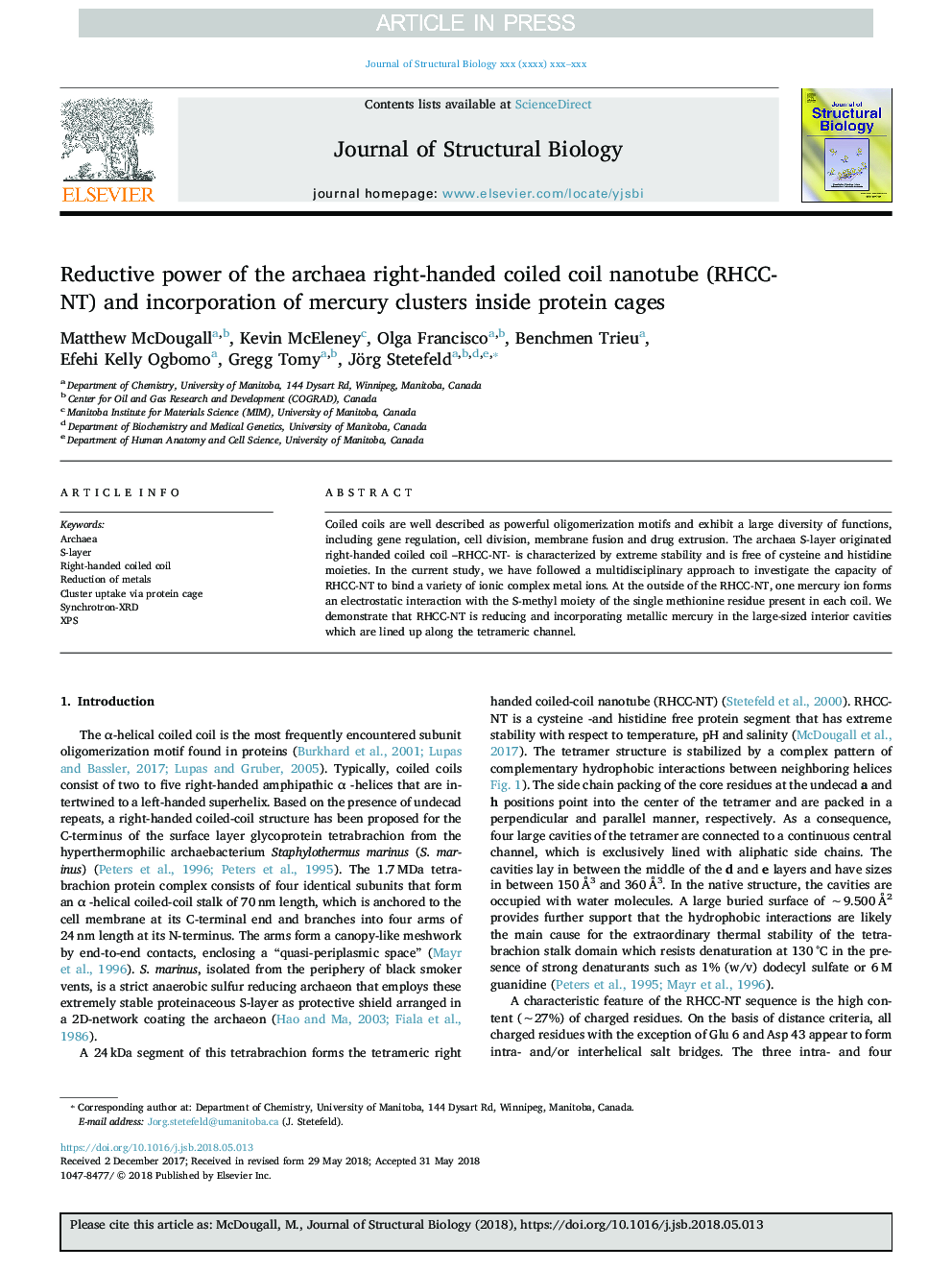| Article ID | Journal | Published Year | Pages | File Type |
|---|---|---|---|---|
| 8648166 | Journal of Structural Biology | 2018 | 7 Pages |
Abstract
Coiled coils are well described as powerful oligomerization motifs and exhibit a large diversity of functions, including gene regulation, cell division, membrane fusion and drug extrusion. The archaea S-layer originated right-handed coiled coil -RHCC-NT- is characterized by extreme stability and is free of cysteine and histidine moieties. In the current study, we have followed a multidisciplinary approach to investigate the capacity of RHCC-NT to bind a variety of ionic complex metal ions. At the outside of the RHCC-NT, one mercury ion forms an electrostatic interaction with the S-methyl moiety of the single methionine residue present in each coil. We demonstrate that RHCC-NT is reducing and incorporating metallic mercury in the large-sized interior cavities which are lined up along the tetrameric channel.
Related Topics
Life Sciences
Biochemistry, Genetics and Molecular Biology
Molecular Biology
Authors
Matthew McDougall, Kevin McEleney, Olga Francisco, Benchmen Trieu, Efehi Kelly Ogbomo, Gregg Tomy, Jörg Stetefeld,
